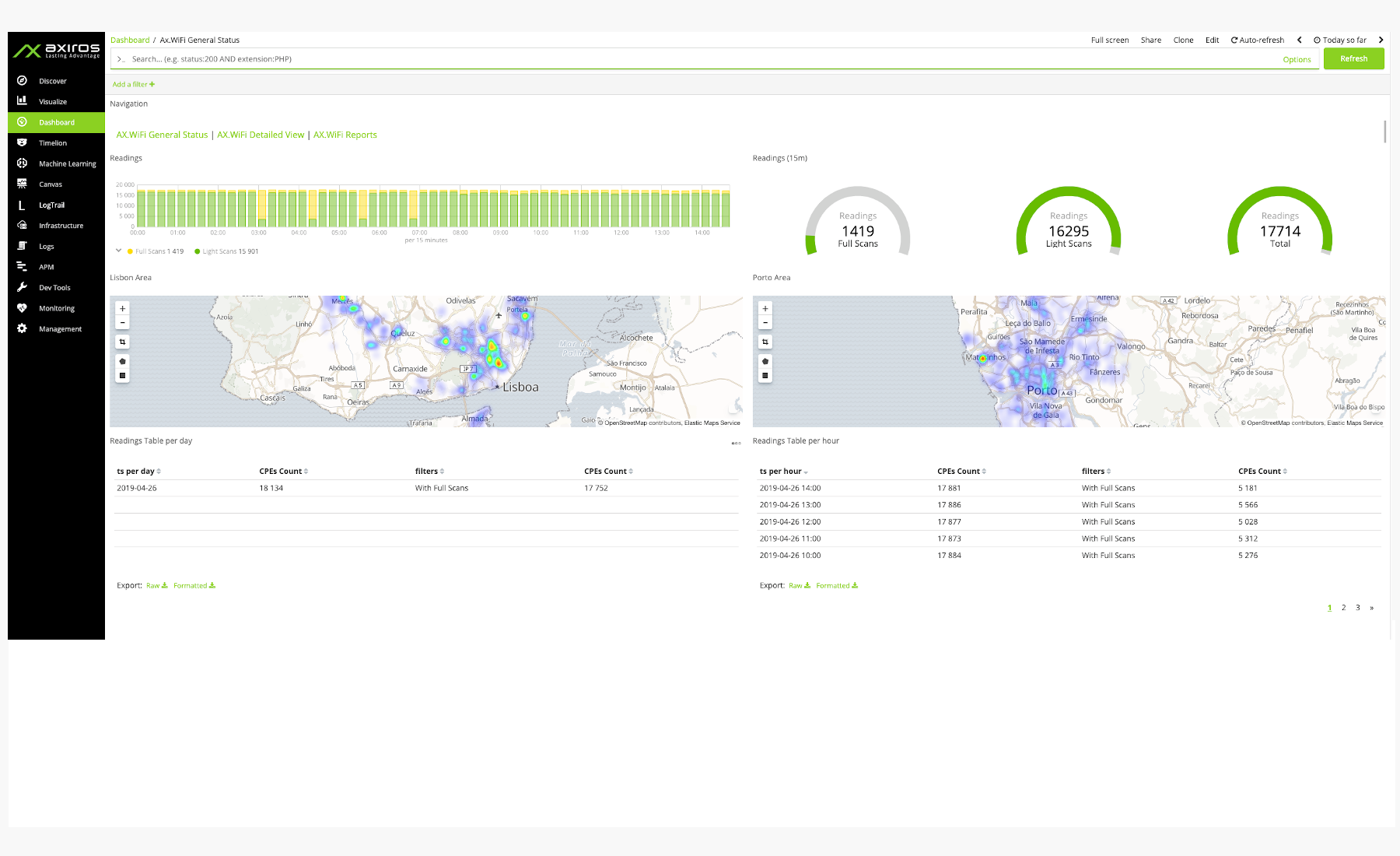The Foundations Of Zero-Touch Customer Service - STREAM 1: Proactive Service Quality Management
The first stream in zero-touch service is the most fundamental: to minimize the need for customer actions by improving service quality management. The network edge data enables anticipation and prevention of faults to the maximum extent possible, and automated diagnosis and correction of unavoidable issues where they arise.
Case Example: Axiros AXTRACT / Vodafone Germany
Problem
Lack of data analytics and proactive assurance
Limited troubleshooting for CPE devices
Lack of visibility into devices (no historical view)
Benefits
Call Avoidance: use available information to enable proactive correction of network and service faults
Call Deflection: together with other tools it enables Self Care and Self Restoration
Network Intelligence: for technical planning, operational support and service insight
AXWIFI: Sophisticated, Network-wide Optimization of Customer Experience
The biggest portion of WiFi related customer service calls are caused by interference from neighboring WiFi networks.
WiFi slows down on noisy channels in an increasingly overpopulated environment. It’s essential to avoid interference and keep the customer’s device on the best performing available channel.
So AXWIFI continuously updates each device’s WiFi Quality Index, then optimizes the channel selection across the network’s long ‘tail’ of under-performing devices.
Its sophisticated algorithms optimize over clusters of ‘friendly’ devices, to avoid the risk of a ripple of support calls as naive changes by individual devices trigger problems for neighbors from the same ISP.
AXWIFI’s standards-compliant design ensures device compatibility and a cost-effective, future-proof solution in a rapidly evolving environment.
At its simplest, this highly granular data allows for the continual monitoring of service quality and performance delivered to each customer, tracking customer-level statistics over time to identify and flag drops in performance, and benchmarking customers against others e.g. within the same geographic area to identify outliers with poor performance. Preventative action can be taken automatically before the impending issue triggers an inbound service call.
Using machine learning techniques, historic fault data at the level of individual premises can be mined for invisible predictive patters that enable the anticipation of specific faults earlier and more reliably.
Through an Auto-configuration Server (ACS) such as AXESS, a range of preventative actions such as reboots, self-diagnostics, firmware updates etc. can be scheduled and triggered without the customer even being aware.
One of the most critical areas for preventative automation is in the customer’s home, alleviating perceived problems due to poor WiFi performance. WiFi Optimization can also be automated and conducted continually across the entire network, optimizing not just individual subscribers but also groups of subscribers whose WiFi signals may overlap.
With tools such as AXWIFI this can be undertaken completely in the background, without the customer ever being aware of it, ensuring the best possible WiFi experience and minimizing the likelihood of customer dissatisfaction leading to a service call. Indeed, such optimization is better conducted in the background, analyzing WiFi performance over a period of days or weeks and verifying performance improvements under different levels of activity of other users within the customer’s home and in neighboring properties.
Automated fault diagnosis combining historic pattern recognition and real-time testing routines can be used to discern whether an issue of perceived poor network performance is being caused by the network itself, by the connection to the customer premises, or by the performance of WiFi network within the customer’s home. This can trigger a range of automated corrective actions, or more accurately identifying and allocating the responsibility for fixing the fault either within the operator’s own organization, or to an outside provider.
Aggregating data from individuals offers the opportunity for holistic management of true customer experience quality. Summary statistics and metrics can give a continuous, up-to-the minute picture of the health of the network at its edge, show the emergence of problems early on, and track the progress of organizational improvement efforts over time.
What proportion of customers have received service quality above target this week?
How rapidly has service quality as perceived by customers improved over the last 6 months?
Which geographical areas or types of customers pose the greatest challenge to service quality standards, and how well are we meeting them?
Are we on track to meet our strategic goals for service quality?
Are our organizational initiatives to improve service quality delivering for customers as we intended?
All these questions and many more can be answered through network performance dashboards and KPI monitors built on a true understanding of the user experience, and hence on a better understanding of network performance.
The operator can set targets for customer experience and quality of service across the entire network, with thresholds for average and acceptable levels of performance for different classes of customers. Monitoring can ensure compliance with individual contractual obligations and instigate corrective action before a formal customer complaint.
Network Edge Performance View – dashboards and heatmaps (European telco)
Finally, network planning can benefit from granular analysis of performance issues e.g. by type of CPE, identifying optimal configurations for each unit given its environment and predicting which units to place with particular customers to minimize future issues.
Let's dive into the second stream in the upcoming blog entry soon. Follow-up here.
From this blog series:








